Local living and 20 minute neighbourhoods: planning guidance
The guidance on local living and 20 minute neighbourhoods aims to encourage, promote and facilitate the application of the Place Principle and create connected and compact neighbourhoods which prioritise environmental, social and economic sustainability.
Part 4 – case studies
This part of the document presents a range of case studies on how place-based interventions are being implemented across Scotland, supporting local living across a variety of geographies.
Aberdeenshire: building a network of urban and rural 20 minute neighbourhoods
Settlement range: City, urban, and rural.
Key initiatives: facilitating 'living well locally' across diverse settlement patterns.
Key challenges: rural depopulation, high levels of reliance on private car, and quality of facilities.
Strategies employed: GIS data - national combined with local, reviewing existing strategies and plans, the Place Standard tool, Academy Towns and Smart Clachans, the Place Principle.
260,000 people live in Aberdeenshire, in different types of communities from the rural towns/villages such as those in the Cairngorms National Park, coastal communities such as Peterhead and Fraserburgh, and the suburb towns of Aberdeen such as Westhill and Portlethen.
How do you tackle the challenge of facilitating local living across such diverse communities?
The local authority's response is strategic, purposeful and data driven. It aims to create an overall Place Strategy for Aberdeenshire to provide a 'living local' place framework for all individual communities, however large or small their place.
The starting point is data. Aberdeenshire already has a dataset developed, the Rural Facilities Monitor , that has been used since 1981 to audit essential daily facilities such as shops, schools and surgeries across the local authority area. This is being expanded and updated to incorporate other daily needs and used to create GIS-based individual settlement profiles that will be publicly available. This will enable local communities throughout Aberdeenshire to access essential data for producing local place plans which implement the 'living well locally' agenda and tackle other policy objectives such as stemming rural depopulation.
In considering data for local living and 20 minute neighbourhoods, one of the major challenges is how to measure the quality of facilities, like shops or active travel routes, rather than simply whether they exist or not – because that can make the difference between whether people have access to healthy rather than poor quality food, or safe and attractive active travel options rather than poor quality routes.

The Place Standard was already being used in Aberdeenshire, to gather qualitative data before 20 minute neighbourhoods were proposed in draft NPF4. For example, Huntly Town Team used the Place Standard in 2021 to inform an update of their Room To Thrive town strategy.

In 2021, the local authority began the ambitious task of applying living local principles in Aberdeenshire's largest settlement, Peterhead. Whilst the precise details should vary with each town, certain common tasks are being worked through in Peterhead:
- gathering and analysing the quantitative and qualitative evidence base, through desktop research and community engagement
- auditing the range of strategies and plans that already exist from children's services, police, fire and rescue, to planning policy, and community-led action plans
- mapping existing projects and proposals
- identifying gaps, barriers, and opportunities in 'living well locally'

The focus is of course to enable long term collaborative action and delivery of living local principles across the town, over a 15 to 20 year period, in line with the Place Principle. It will also test and establish a model for other Aberdeenshire towns to use and adapt.
Ultimately the aim is to align all policy, investment, and service delivery (not only planning and land use) to deliver local living and 20 minute neighbourhood principles so that all action around poverty, inequality, learning, healthcare, and climate change is co-ordinated through the lens of Living Well Locally.
For more information on Aberdeenshire's approach, see this 2022 presentation to the Surf People in Place Practice Network.

Edinburgh: embedding 20 minute neighbourhoods as a new approach to service delivery and regeneration
Settlement range: City.
Key initiatives: 20 minute neighbourhood strategy, developed to embed working to the Place Principle for improved outcomes.
Key challenges: improving outcomes city-wide, empowering collaboration and participation in the definition, design, and delivery of public services, designing green and people-focused local centres, improving mobility city-wide.
Strategies employed: rapid scoping assessment, Place Principle - stronger partnership working including to combat loneliness and isolation, GIS data, creation of strategy and vision, use of Place Standard tool, community engagement activities, local place plans, town centre first principle, creation of multi-purpose hubs, brownfield site regeneration, reimagining service delivery, active travelprinciple.
The City of Edinburgh Council approved its initial 20 minute neighbourhood strategy in June 2021, updated in August 2023 - 20 minute neighbourhoods – The City of Edinburgh Council. The strategy outlines how the local authority is working to provide people with access to services and facilities to meet most daily needs within a 20 minute walk or wheel of their homes. This approach will support the development of connected neighbourhoods across the city that are healthier, greener, more vibrant, and inclusive. This is a new approach for the city which aims to deliver more sustainable places, improve public services, and build on the local sense of community across the city. Helping to inform the strategy, a Rapid Scoping Assessment was organised jointly by the Improvement Service, Scottish Health and Inequalities Impact Assessment Network, and the Spatial Planning for Health and Wellbeing Collaborative Group[12], comparing the traditional approaches for local development planning to a 20 minute neighbourhood approach in Edinburgh.
Delivery of the strategy is seen as a long-term endeavour. Every neighbourhood in Edinburgh has its own unique set of circumstances, which means that places need to be considered individually. For some neighbourhoods, improvements will be incremental and delivered though a long-term and ongoing process of change. For other neighbourhoods there will be opportunities to accelerate progress. This will require all parts of the local authority and partners to embed the 20 minute neighbourhood concept within their day-to-day activity and investment decisions.
To support the new way of working, the local authority has established:
- a 20 minute neighbourhood Board comprising key representatives from different services, which acts as a dedicated forum for discussion and collaboration
- a dedicated multi-disciplinary 20 minute neighbourhood programme team, encompassing skills and knowledge in urban design, planning, transport, property, and communications. The team's role is to implement parts of the strategy, support other local authority services to embed 20 minute principles into projects, and make sure that investment and development considerations take account of the strategy

Funding to support the implementation of the strategy has included the Scottish Government Place Based Investment Programme with projects aligned to priority areas of focus. These are town centres, areas that have a lower score on the Scottish Index of Multiple Deprivation (SIMD) and more rural areas.
Work is initially focussing on the city's local town centres (in support of the town centre first principle), which are often in high density areas and provide many of the essential facilities and services that people need easy access to. The local authority is currently exploring town centre improvement projects in Dalry and Portobello.
Further work is addressing areas where need is greatest, whether that is due to deprivation or poor connectivity, or where there are opportunities to capitalise on work that is already planned. These include new school investments with wider community uses in Liberton and Currie. The development of a local place plan in Wester Hailes (see separate case study) has also been supported.
20 minute neighbourhood principles are also being embedded in local authority-led regeneration work in areas such as Craigmillar, Granton, Pennywell, and Muirhouse, and on the development of key brownfield sites across the city. The affordable housing element of regeneration is part of the local authority's ambitious programme to deliver 20,000 affordable homes in the city over a decade. Updates on these and other projects can be found here.
The Granton Waterfront regeneration, for example, will deliver a new coastal town with an ambitious 20 minute neighbourhood vision over the next 10-15 years. This regeneration will deliver around 3,500 new net zero carbon homes (over 35% of them affordable), a primary school and health centre, commercial, creative, community space, and a new coastal park.
New active travel and public transport infrastructure will be created throughout the regeneration area, including new cycle paths and a mobility hub. The project will create new employment opportunities, meaning residents of this fast-growing area will be able to access work locally, while partner organisations will deliver substantial new cultural and educational assets over the regeneration timeframe.
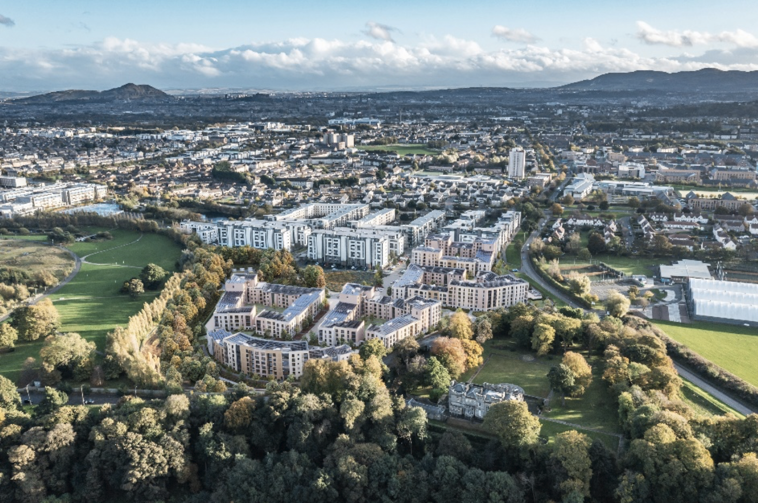
Similarly, regeneration in Pennywell has delivered a new school, medical centre, retail centre, improved public realm and new homes. A new Community Hub at Macmillan Square will feature an early years centre, a library, skills hub, affordable homes, and an expanded North Edinburgh Arts facility.
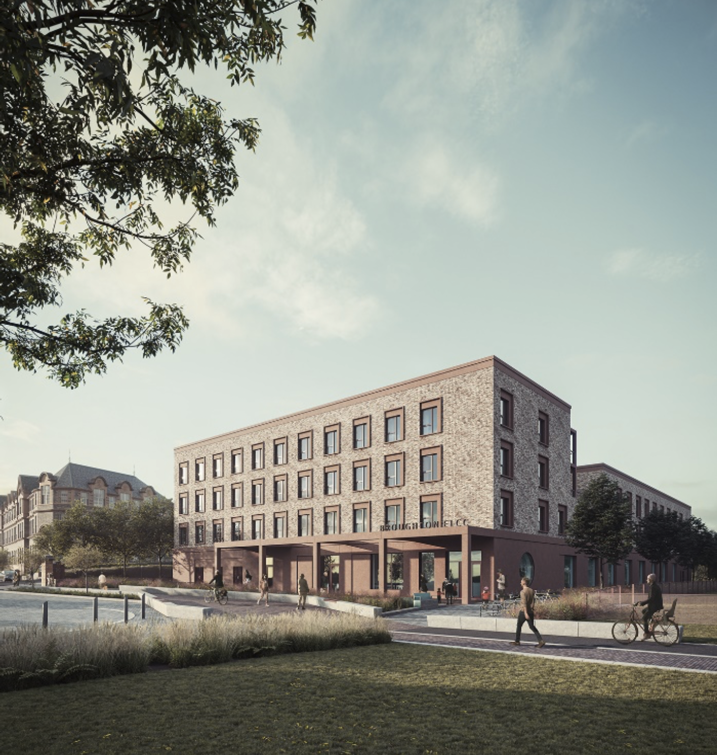
The hub will include dedicated space for young people, an expanded café, and shared atrium. All staff operating from the space will follow a 'No Wrong Door' approach to make sure citizens can access relevant services in the space or be signposted where necessary.
Meanwhile for Edinburgh's Powderhall regeneration, a former waste transfer station was originally proposed as an open market sale to a volume housebuilder but evolved into the local authority taking forward a major mixed-use regeneration project. The regeneration will now deliver 260 new homes (35% affordable, compared to the city's 25% target), a nursery, older people's housing, commercial units, artist's studios, and community space.
Stewarton, East Ayrshire: using 20 minute neighbourhood principles to help inform a local development framework
Settlement range: accessible small town
Key initiatives: utilising 20 minute neighbourhood thinking, using context and place-based collaborative approaches to inform decision making.
Key challenges: growth of town vs infrastructure capacity, compact growth and town centre, housing site release, infrastructure first approach to health and education capacity.
Strategies employed: Place Principle working (Key Agencies Group (KAG), communities and local authority working together), infrastructure first, Active Travel, use of qualitative and quantitative data, GIS data, national combined with local, reviewing existing strategies and plans, community engagement, Place Standard with climate lens.
Stewarton lies between Kilmarnock (10km) and Glasgow (40km). Due to the rail link and its proximity to Glasgow, the town has been steadily growing in recent decades from about 6,500 residents in 2001 to an estimated 7,700 residents in 2020.
As the town grows, and more housing sites are released, there will be increasing pressures on the existing infrastructure such as roads, water, drainage, education, health and social care, and recreation and leisure. In line with the Place Principle, the local authority has been working with
the Key Agencies Group (KAG), with support from Architecture and Design Scotland, to understand how to address these constraints.
20 minute neighbourhood principles were used as a guiding framework for gathering both quantitative and qualitative information about Stewarton. Quantitative data was mapped using GIS and analysed to explore key considerations such as facilities and services, open space, connectivity, and walkability. This information began to identify more clearly the constraints and emerging opportunities.
Qualitative data was gathered, piloting use of the place standard with a climate lens through community workshops which prompted conversations around mitigation and adaptation actions that could happen in Stewarton to help address the climate and biodiversity crises. A 'living local' survey was then carried out to gain further insights into walking distance thresholds, frequency of using services, and the quality of routes to move around. The evidence from the survey and workshop, community aspirations, and speaking to relevant local authority services and agencies, helped develop an understanding of the quality of place and people's experiences in Stewarton.
Combining the use of data, mapping, community engagement, and cross-departmental involvement, has helped to foster a whole-place collaborative approach for Stewarton to be adopted in line with the Place Principle. Support was then provided by consultants who were commissioned by the local authority to aid the preparation of a new local development framework for Stewarton building on the early support from KAG and Architecture and Design Scotland. The Framework will be used by development proposers, development management officers, and in preparing and assessing of planning applications for the town.
The framework also contains a placemaking map and a shared action plan that encompass improvements to the walking and cycling network, public realm, open space, affordable housing and homes for older people, and much more besides.
The framework document and the support from Architecture and Design Scotland have led to further conversations around future investment in the town, which are then helping to develop place-based evidence that will inform important decisions at a whole-town scale across the local authority services.
Fundamentally, this collaborative approach has allowed the local authority to take an infrastructure first approach to land use planning and investment decisions, through the lens of 20 minute neighbourhoods and living well locally. The process is ongoing; however, this type of approach has allowed a greater emphasis to be placed on the importance of collaborative working to embrace and deliver radical change to tackle and adapt to climate change, restore biodiversity, improve health and wellbeing, reduce inequalities, and build a wellbeing economy. Considerations are now being explored around matters such as the right locations for future developments and investment decisions, including housing, health, and education facilities.
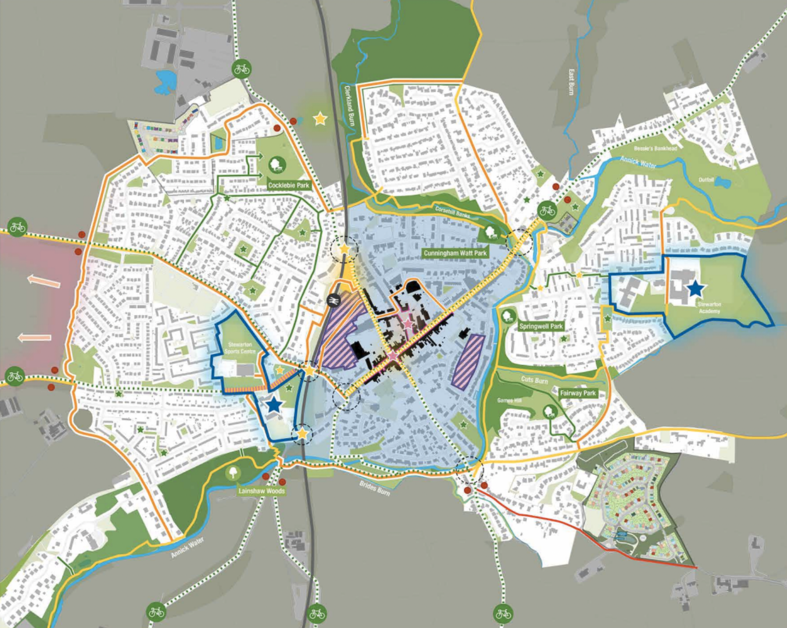
Lessons learned from the process include:
- the value of pairing digital mapping analysis with the lived experience of life on the ground, for example to produce combined data not only walking and cycling journey times but also accounting for the quality of place along the journey
- the challenge of implementing and retrofitting 20 minute neighbourhood principles into existing settlements and infrastructure should not be underestimated
- the 20 minute neighbourhood principles are a new concept to many. This presents challenges towards institutional decision making and will require collaborative working to realise delivery and implementation
- when multiple organisations are asked to commit and co-ordinate their activities, in line with the Place Principle, issues will arise around timing of budgets and delivery therefore a whole-place collaborative approach is needed
Wester Hailes, Edinburgh: community and local authority collaboration
Settlement range: large urban.
Key initiatives: collaborative working to tackle strategic and local thinking around 20 minute neighbourhoods.
Key challenges: capacity and resources for local place planning, combining the long term regeneration programme with local place planning aspirations, timing, and complex funding streams. Confidence building through early action projects.
Strategies employed: Place Principle working - communities and local authority working together, local place plan, Place Standard tool, early action project identification, community-led regeneration, community ownership, community hubs.
Wester Hailes, on the western edge of Edinburgh, was initially constructed in the early 1970s with extensive redevelopment in the 1990s and 2000s. In around 2019, two new initiatives began: the local community began to prepare a local place plan, and the local authority embarked on a 10–15-year regeneration programme. Both initiatives shared a common goal: to create a model 20 minute neighbourhood.
The two pieces of work support each other, each tackling different aspects of the 20 minute neighbourhood concept.
The community-led local place plan focuses on community aspirations. Using the Place Standard as a tool for discussion helped the local place plan to identify what the community can do for itself, and what they would like others to do. There are dozens of actionable projects in the local place plan which will help make a 20 minute neighbourhood a reality for Wester Hailes residents, from projects for community hubs, play spaces and paths, to strategies for work, learning, food, and health and wellbeing.
Those initiatives complement the local authority-led regeneration programme, which includes investment in housing, transport, greenspaces, schools, and health centres. 'Early action' projects include a new high school, housing, and cycle links.
To make sure the two processes mutually supported each other, the community and the local authority needed to work together in tandem. That isn't always easy when funding comes from different sources. So, during 2020-21, when the community was struggling with capacity and resources to complete the local place plan, the local authority helped secure Place Based Investment Programme funding to pay for professional facilitation and support to complete the local place plan. That made sure that the local authority's investments – with an established spend programme and funding deadlines – did not run ahead of the local place plan process, which would have meant that the local authority-led programme might have focused on the wrong things or lacked community support.

20 minute neighbourhood principles are being embedded into both the regeneration masterplan and the local place plan. Although Wester Hailes already has many of the features that you would expect in a 20 minute neighbourhood, there was a specific deficiency that was laid bare during the COVID pandemic: the lack of indoor community spaces where local people and groups can meet and socialise. So, as part of the collaboration, three community hubs are now proposed. The delivery of each is being led by a community organisation.
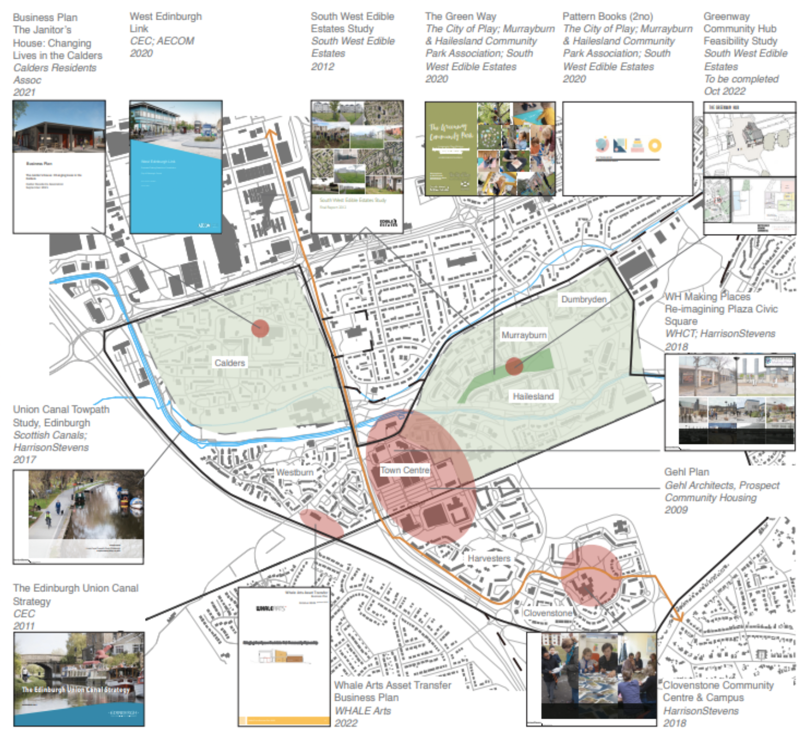
Image shows an overview of existing studies undertaken in Wester Hailes which were given consideration in the development of the proposed local place plan.

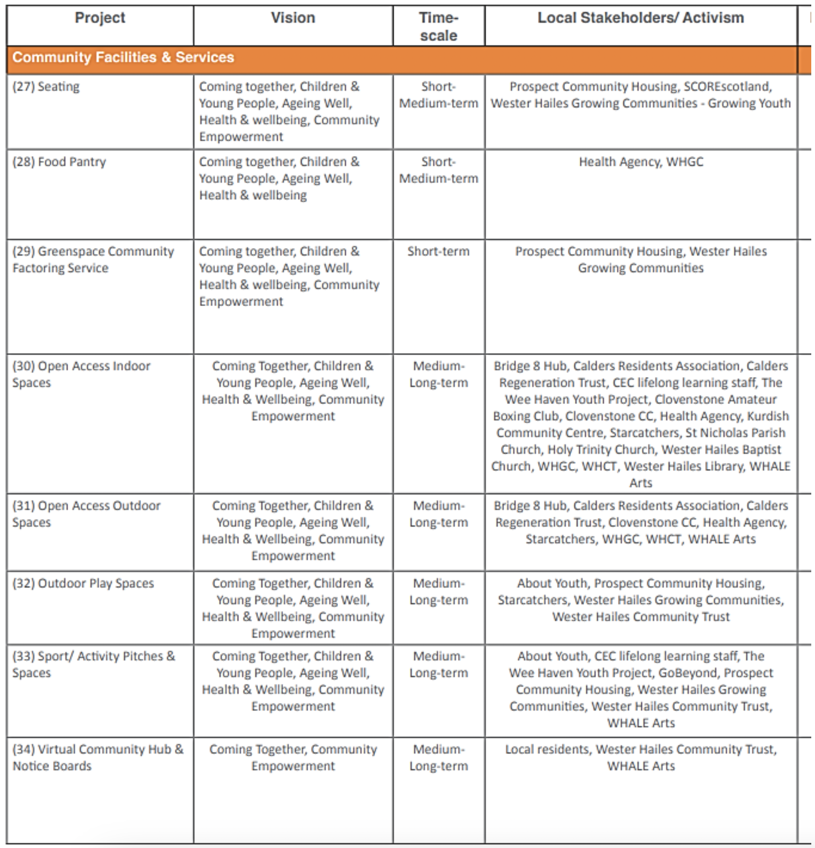
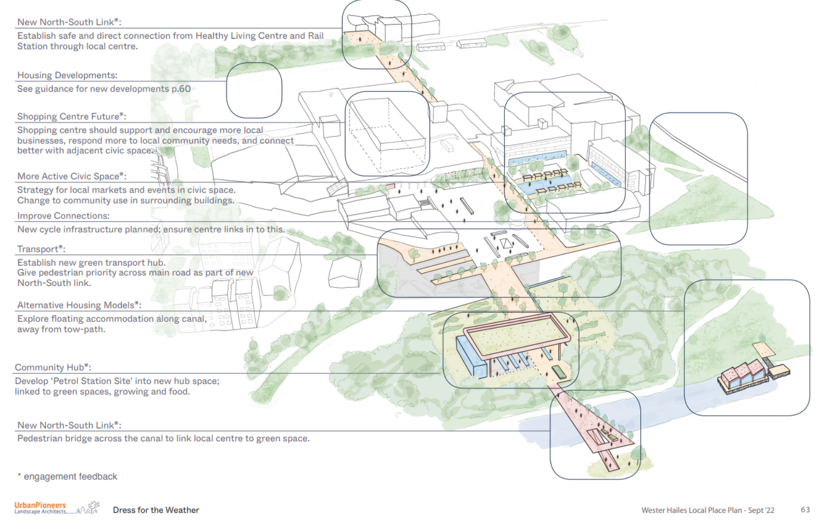
Drymen, Loch Lomond and the Trossachs National Park: piloting 'living well locally' in a rural community
Settlement range: accessible rural
Key initiatives: planning and delivering local living/20 minute neighbourhood through local place plans for improved outcomes.
Key challenges: movement, reimagining mobility for rural areas through active travel, exploring priorities within village and working with neighbouring villages and towns as network, improving access to essential services beyond walking distance, managing tourism.
Strategies employed: Place Principle working,communities and local authority working together and identifying collaborative partnerships. Place Standard tool and community engagement to form qualitative data, physical onsite assessment of place, mobility through active travel, local place plan.
Creating 20 minute neighbourhoods in a rural area creates distinct challenges. Where community facilities are inevitably more dispersed and population density lower, how is it practically possible to enable everyone to be within a 20 minute walk, wheel, or cycle of all their daily needs?
This was the starting point for a pilot project in the village of Drymen and the neighbouring villages along the east of Loch Lomond, where the National Park funded a pilot through their Green Recovery Fund to look at how 20 minute neighbourhoods might work for rural communities. They appointed Forth Environment Link to deliver the pilot.
The pilot scheme was an opportunity to test the Place Standard as a tool for community engagement on 20 minute neighbourhoods. This enabled the community to consider and record not only whether its daily needs were satisfied, but also qualitative data about how well those daily needs were met. The work also wanted to examine how rural villages share services and are connected, and how the needs and impacts of tourism were managed and supported. To do this, the engagement and baseline information looked beyond just the village boundary and involved joint working with other neighbouring communities.
The work also explored how the concept could be collaboratively planned and delivered through the medium of a local place plan. It produced valuable insights into how rural local place plans can use the principles of local living and 20 minute neighbourhoods to:
- explore the priorities within a village and with neighbouring villages and towns,
- how to improve access to essential services that feel beyond a reasonable walking distance
- the reimagining of mobility for a wider rural area where there are shared users of services and a shared need for access

The pilot produced a community vision for how people can meet their daily needs locally in Drymen and the surrounding villages. More information can be seen in this report published in 2022 by the National Park Authority which was renamed to reflect the circumstances of the place: Living Well Locally: Vision and Route Map.
Separate research commissioned by HITRANS at the same time investigated how 20 minute communities might be made workable across a variety of challenging rural and island contexts.

Potential solutions included broadening the focus from walking, wheeling, and cycling to other sustainable travel modes such as community transport, treating 20 minutes as a guide time rather than an absolute,and embracing established technological solutions to delivering services and goods, such as online services and drone deliveries of prescriptions and post.
The rich data and recommendations provided through the HITRANS Study, in addition to the outcomes of an active travel survey and further consultations in the village, helped ensure that many views contributed to the development of their Drymen Local Place Plan 2023-32.
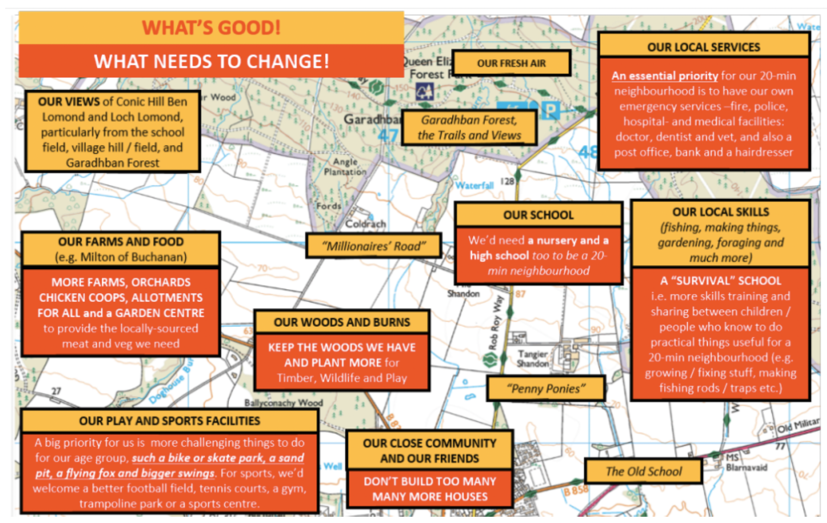
Shetland: 20 minute neighbourhoods as the basis for joined-up planning and transport policy
Settlement range:rural and island settlements –demonstrates local living and 20 minute neighbourhoods are about good planning and collaboration.
Key initiatives: new approach proposed within the Main Issues Report.
Key challenges: application of the 20 minute metric, reliance on private car use, decentralising services.
Strategies employed: town centre and settlement enhancement approach, rural locality hubs, local living/20 minute neighbourhood thinking.
Shetland LDP Main Issues Report, published in 2022, proposes a new approach to enhancing town centre and settlement retail areas across Shetland. The preferred option put forward in the Main Issues Report is for 20 minute neighbourhoods to form the basis of a new concept of rural locality hubs or service hubs, such as Brae, Scalloway and Baltasound, for example.
These locality hubs, and preferred areas for future growth, were identified through the lens of 20 minute neighbourhoods.

The Main Issues Report highlights that, in the Shetland context, being able to meet daily needs within a 20 minute walk of your home should not be applied too rigidly.
Many of Shetland's more rural communities have established retail centres and services that could not be reached by walking within 20 minutes from homes on the edge of, or outside, more loosely scattered settlements.
The intention is that the next LDP will recognise that access to service hubs by Shetland's less well-connected communities is undertaken primarily by car. However, by continuing to focus development and services on locality hubs, reliance on travelling into Lerwick for basic retail services can be reduced – in line with 20 minute neighbourhood principles. The Main Issues Report suggests that these principles should form the basis of assessing new developments to help implement this approach.
The Main Issues Report explains that locality hubs play an important role in the provision of business and retail services across Shetland's many communities: the local shop, for example, often plays a vital economic and social role in community life.

The settlement of Brae, on North Mainland, is an example of a Locality Hub. It contains a wide range of education, leisure, healthcare, and retail services which serve not only the population of Brae but the wider North Mainland locality too. It is also a significant employment hub for North Mainland. People can make one car or public transport journey to Brae to access a number of services in close proximity to each other and not available within their community, rather than have to travel 40km south to Lerwick.
The 20 minute neighbourhood approach outlined in the Main Issues Report seeks to consolidate and enhance Brae's nature as a locality hub by strengthening its vitality and viability. LDP2 will also support the continued development of public transport networks and active travel measures that enable easy access to and within Shetland's many service hubs. This reflects a co-ordinated approach to land use and transport planning, with Shetland active travel strategy also taking a 20 minute neighbourhood approach to focus on improving accessibility of local destinations.
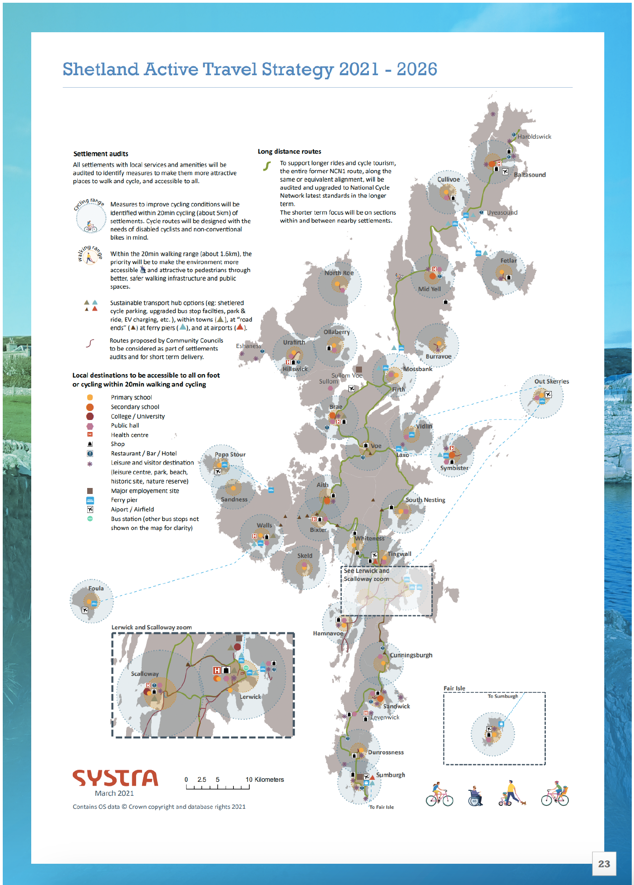
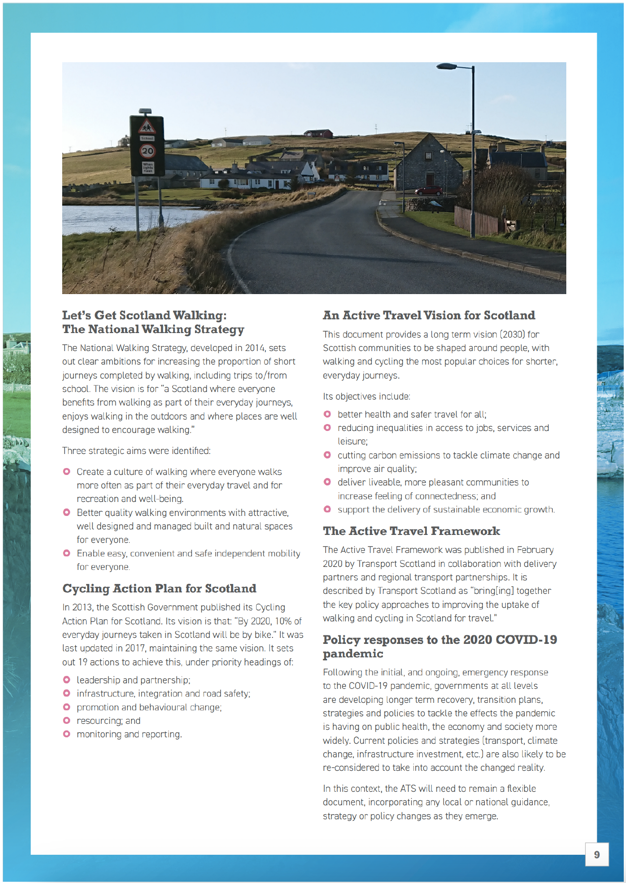
Contact
Email: chief.planner@gov.scot
There is a problem
Thanks for your feedback